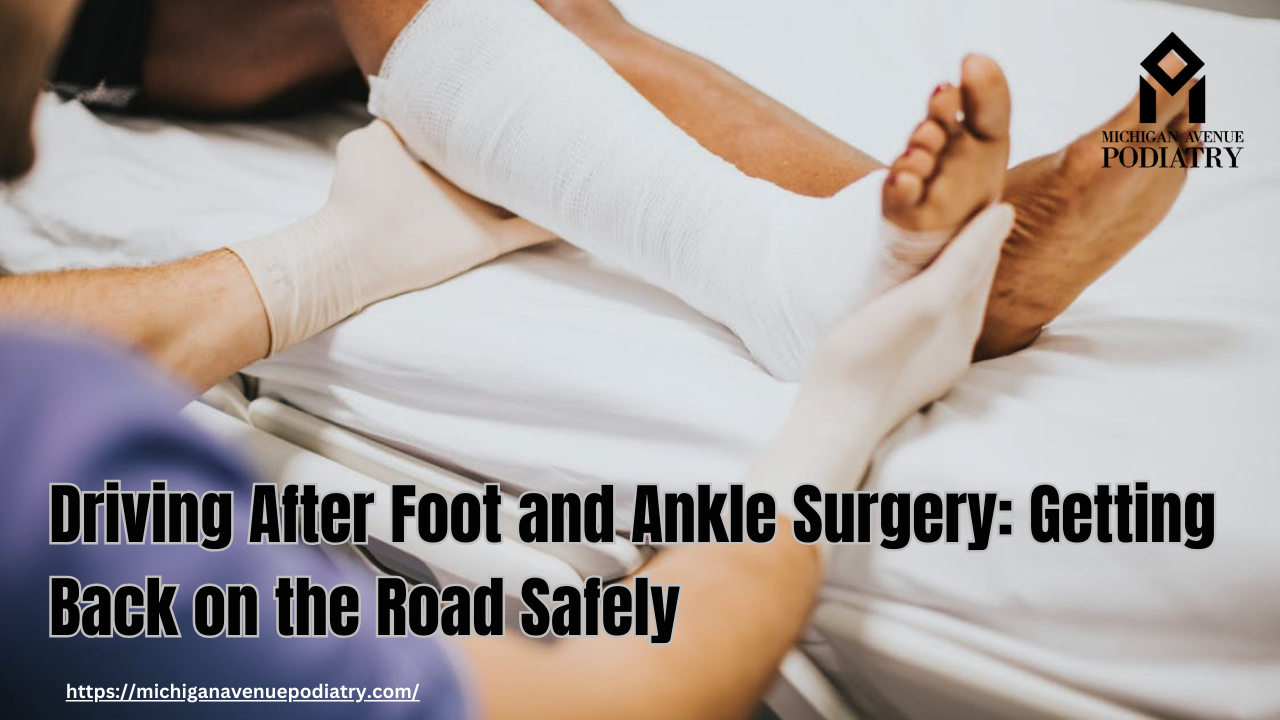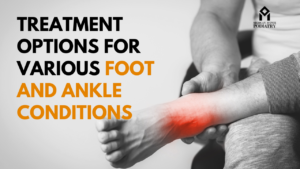Elective foot and ankle surgery can significantly improve your quality of life by addressing chronic pain, correcting deformities, or repairing injuries. While the prospect of a pain-free future is exciting, the recovery period brings questions about returning to everyday activities, including driving.
This blog post provides crucial information on returning to driving after foot and ankle surgery. We’ll explore factors influencing safe driving after surgery, the typical recovery timelines, and tips to ensure a smooth transition back behind the wheel.
Why Driving After Foot and Ankle Surgery Requires Caution:
Driving requires a full range of motion in your foot and ankle, good reflexes, and the ability to control the brake and gas pedals comfortably. Foot and ankle surgery can temporarily affect these abilities due to:
- Pain and discomfort: Pain medication can impair judgment and reaction time, making driving unsafe.
- Swelling: Swelling around the surgical site can limit your ability to comfortably operate the pedals.
- Limited Range of Motion: Depending on the surgery, you might experience temporary stiffness or restricted movement, making it difficult to control the pedals effectively.
- Balance Issues: Certain surgeries might affect balance, making it challenging to maintain control of the vehicle.
Factors Affecting Your Return to Driving:
The timeframe for returning to driving after foot and ankle surgery varies depending on several factors:
- Type of Surgery: Different surgeries have varying recovery times. Procedures like bunionectomy or hammertoe correction might allow for a quicker return compared to complex reconstructions like ankle replacements.
- Severity of Injury: The extent of the repair and the complexity of the surgery play a significant role.
- Individual Healing Rate: Everyone heals at their own pace. Factors like age, overall health, and adherence to physical therapy can influence your recovery timeline.
- Pain Management: Effective pain management ensures you can comfortably operate the pedals and react quickly to situations on the road.
The Role of Your Podiatrist:
Your podiatrist, a foot and ankle specialist, is the best resource for determining when you can safely resume driving. During follow-up appointments, your podiatrist will assess your progress regarding pain, swelling, range of motion, and overall healing. They will clear you to drive when they are confident your abilities have returned to a safe level.
Typical Recovery Timelines for Returning to Driving:
General Guidelines:
- 6-8 weeks: This is a common timeframe for surgeries like bunionectomy, hammertoe correction, or minor ligament repairs.
- 8-12 weeks: More complex procedures like ankle arthroscopy or fracture repairs might require a longer wait.
- 12+ weeks: Major surgeries like ankle replacements or extensive reconstructions might require a longer recovery period before driving is considered safe.
It’s important to remember that these are just general guidelines. Your podiatrist will provide personalized guidance based on your specific surgery and healing process.
Tips for a Smooth Return to Driving After Foot and Ankle Surgery:
- Follow Your Podiatrist’s Instructions: This includes restrictions on weight-bearing activities and physical therapy recommendations.
- Manage Pain Effectively: Use pain medication as directed by your doctor to ensure you feel comfortable and alert while driving.
- Practice Before Hitting the Road: Once your podiatrist clears you, begin by practicing driving in a safe, controlled environment like an empty parking lot. This allows you to regain confidence in using the pedals and maneuvering the vehicle with your injured foot.
- Start Short and Local: Begin with short drives for essential errands before venturing on longer trips. This allows you to gauge your comfort level and adjust accordingly.
- Consider Modifications: If necessary, explore temporary modifications to your vehicle, such as pedal extenders or adaptive driving aids, to make driving more comfortable and manageable.
- Listen to Your Body: Pain is a signal from your body that something is wrong. If you experience pain or discomfort while driving, pull over to a safe location and rest. Don’t push yourself beyond your limits.
- Communicate with Your Passengers: Inform passengers about your surgery and any limitations you might have. This fosters understanding and can help them support you during your initial drives.
Additional Considerations:
- Automatic Transmission: If you are considering foot and ankle surgery and don’t already drive an automatic vehicle, it might be worth transitioning before surgery. Automatic transmissions eliminate the need to operate a clutch pedal, making driving easier with a recovering foot or ankle.
- Insurance Coverage: Check with your insurance company about any restrictions related to driving after surgery.
- Public Transportation: Consider utilizing public transportation or ride-sharing services during the early stages of recovery to maintain your independence while adhering to your doctor’s driving restrictions.
Conclusion:
Returning to driving after foot and ankle surgery is an exciting milestone in your recovery journey. By prioritizing safety, following your podiatrist’s instructions, and gradually reintroducing driving into your routine, you can ensure a smooth and confident transition back behind the wheel. Remember, patience and good communication with your healthcare team are key to a successful recovery.
To schedule an appointment with our board-certified foot and ankle specialists, Book Your Appointment Now




